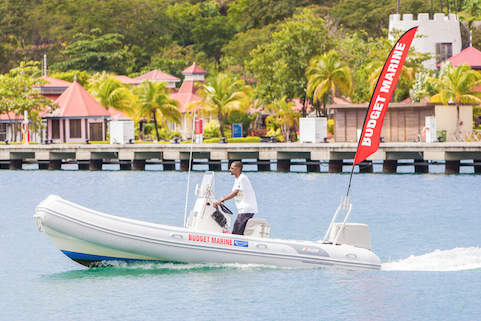The inflatable boat we recognize today is a recent development and has only been in its current form since the beginning of the 20th century. However, man has been using the principle of buoyancy aids to cross water derived from air being sealed in a ‘bag’, starting with coated animal skins, for thousands of years. It was only with the development of suitable inflatable boat fabrics and adhesives, that we have been able to gain an appreciation of the buoyancy, stability, versatility and robustness of inflatable boats and inflatable structures.
 |
.jpg) |
The first major step forward in modern inflatable boat construction came with the development of rubber coated fabrics for the airship industry. French airship manufacturer Societe Zodiac then used their skills in 1934 to manufacture a 2-seater inflatable kayak and then an inflatable catamaran; it didn’t take long to attach a floor between the buoyancy tubes and the modern day Zodiac inflatable boat was born.
 |
 |
After the World War 2 inflatable boat development took a leap forward when new synthetic materials, neoprene and Hypalon were coated onto nylon fabrics and with the new generation of glues being made, inflatable boats were now able to cope with the harsh natural elements without becoming brittle, as natural rubber does, and impervious to salt, UV and petrochemicals.

Development was driven forward by those requiring lifesaving boats. The Atlantic College in Wales combined the inherent buoyancy and stability of the inflatable boat with the speed of modern planing hulls, so that rescue services such as the RNLI could increase the speed of their inflatable craft to get to those in need quickly, and the first rigid inflatable boat or RIB was born.

Manufacture of smaller inflatable dinghies, tenders and kayaks has moved into the mass production era, as heat-weld seamed pvc and vinyl materials have been developed, but there are also some low volume customised RIB builders who continue to push the boundaries with larger and even more capable inflatable boats. The future for RIB’s, inflatable boats and inflatable marine structures is promising and the level of support for the owner and operator is now excellent.

One of the major brands in the Caribbean is AB Inflatables, distributed by Budget Marine. At the state of the art 1000,000 square foot AB factory in Colombia this versatile range of inflatables are handcrafted with exacting care and first rate materials. The company is also always testing the quality of their product in extreme conditions, as was recently demonstrated by the Voyage to the End of the World – the rounding of Cape Horn by RIB, an incredibly tough journey from Perto Montt to Cape Horn in an AB Inflatable 24VST and an AB Inflatable 28 VST. As Budget Marine’s founder, Robbie Ferron, says: ‘If you can go around Cape Horn in an AB then it should be good enough to go around anchorages in the Caribbean!’ For more info:https://www.powerboatandrib.com/2016/06/21/voyage-to-the-end-of-the-world-rounding-cape-horn-by-rib/
 |
 |
In South Africa, where inflatable boats are often called ‘rubber ducks’, the sport of racing inflatable boats has led to the development of inflatable catamarans such as the Thundercats, seen recently at the USVI Poker Run in St Thomas. Check the following website for some exciting, kidney crunching footage of these intrepid racers.https://youtu.be/Y6Wpe4CRUlM
